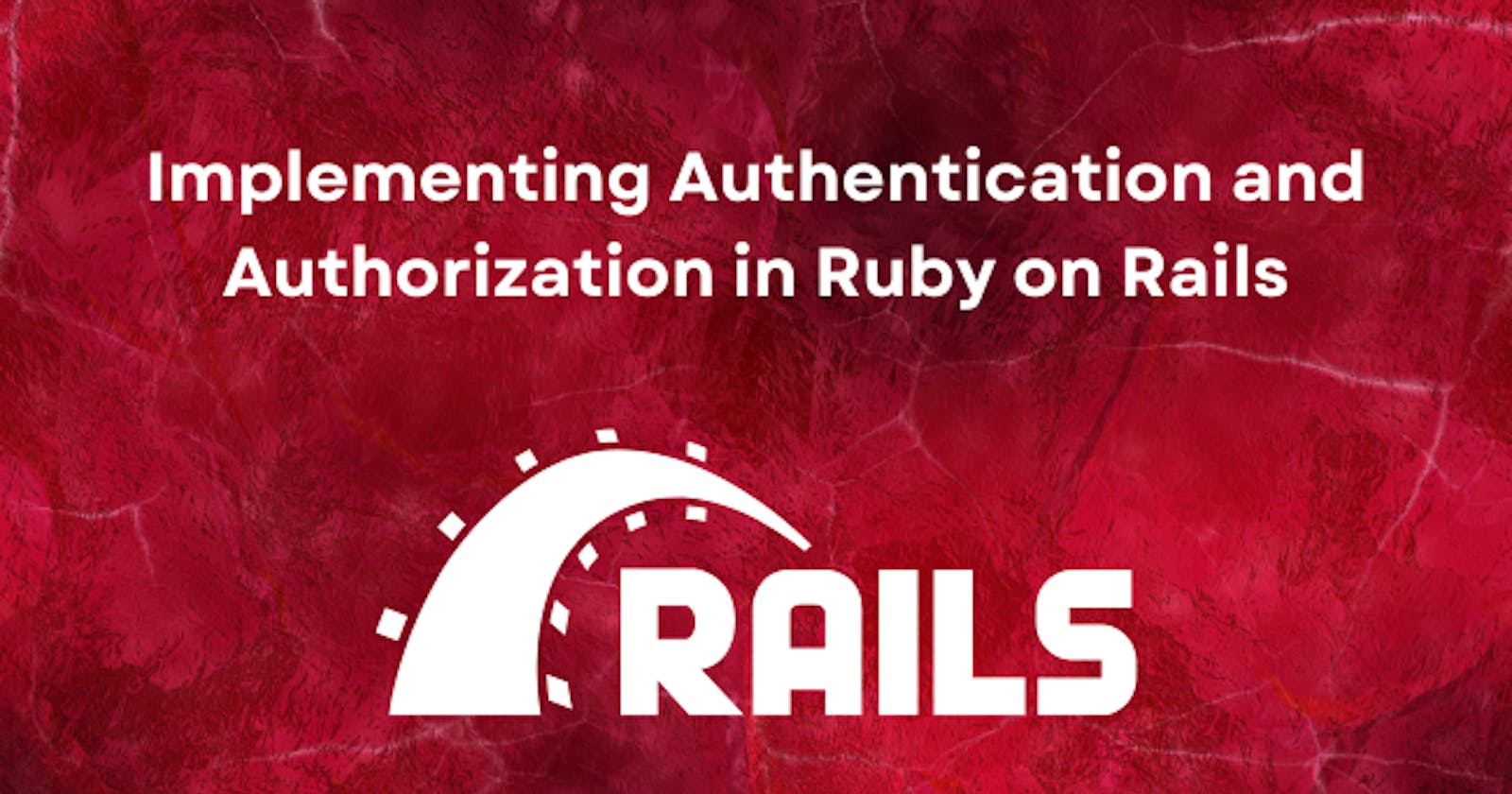Implementing Authentication and Authorization in Ruby on Rails
In the world of web development, security is paramount. Whether you're building a simple blog or a complex web application, implementing authentication and authorization is crucial to safeguarding your users' data and controlling access to different parts of your application.
Ruby on Rails, a popular web application development framework, provides robust tools and libraries to handle these aspects effectively. In this blog post, we'll explore how to implement authentication and authorization in a Ruby on Rails application.
Let’s Begin!!
Authentication vs. Authorization
Before diving into implementation details, let's clarify the difference between authentication and authorization.

Authentication
Authentication is the process of verifying the identity of a user. It ensures that the user is who they claim to be. Common authentication methods include username/password authentication, social login (OAuth), and token-based authentication.
Authorization
Authorization, on the other hand, determines what actions an authenticated user is allowed to perform within the application. It involves defining roles, permissions, and access control rules to restrict or grant access to certain resources or functionalities.
From online donor management software to fleet management software, it is crucial to set up and implement authentication and authorization securely. And ruby on rails development framework is the best option to integrate this features securely.
Setting Up Authentication
One of the most popular authentication solutions for Ruby on Rails is Devise. Devise is a flexible authentication solution that provides a full set of features out of the box, including user registration, session management, password recovery, and more.

To integrate Devise into your Rails application development, follow these steps:
1. Add Devise to your Gemfile:
gem 'devise'
2. Run bundle install to install the gem.
3. Generate the Devise configuration:
rails generate devise:install
4. Generate the User model (or any other model you want to authenticate):
rails generate devise User
5. Run the database migrations:
rails db:migrate
6. Add authentication filters to your controllers to restrict access to authenticated users:
before_action :authenticate_user!
With these steps completed, you now have a fully functional authentication system in your Rails application. Users can register, log in, log out, and reset their passwords.
Implementing Authorization
While Devise takes care of authentication, handling authorization requires a bit more customization based on your application's specific requirements.
One common approach is to use role-based access control (RBAC) or permissions-based access control (PBAC) to manage user access.

Here's a simplified example of how you can implement authorization using roles in Rails:
1. Define roles for users in your User model:
class User < ApplicationRecord
enum role: [:user, :admin]
End
2. Define authorization logic in your controllers using before_action filters:
class AdminController < ApplicationController
before_action :authenticate_user!
before_action :authorize_admin!
def index
# Controller logic for admin-only actions
end
private
def authorize_admin!
redirect_to root_path, alert: "You are not authorized to access this page." unless current_user.admin?
end
end
In this example, the authorize_admin! method checks if the current user has the admin role before allowing access to the controller action. If not, the user is redirected to the root path with an alert message.
If you are not so familiar with ruby on rails development framework, then it will be beneficial for you to partner with the top ruby on rails development company for your Rails project development.
Conclusion
In this blog post, we've covered the basics of implementing authentication and authorization in a Ruby on Rails application.
By using tools like Devise for authentication and custom logic for authorization, you can build secure web applications that protect user data and control access to sensitive resources.
Remember that security is an ongoing process, and it's essential to stay updated on best practices and potential vulnerabilities.
Regularly review and update your authentication and authorization mechanisms to ensure they remain robust in the face of evolving threats. With careful planning and implementation, you can create web applications that users can trust and rely on.
Happy RoR Development!!
